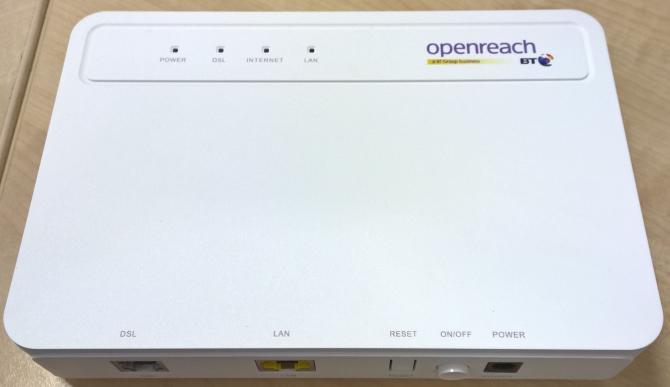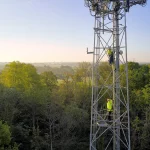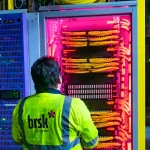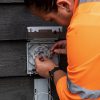Openreach Plan Self Install G.fast Broadband ISP Trial for Late 2018
A recent meeting between ISPs has revealed that Openreach expect their new 330Mbps capable G.fast ultrafast hybrid fibre broadband technology to cover 2.2 million UK premises by 31st March 2019 (currently c.1 million) and they’re aiming to trial a new self-install solution later in 2018 (i.e. no engineer required).
The G.fast technology works in a roughly similar way to the existing VDSL2 based Fibre-to-the-Cabinet (FTTC) service. Essentially a fibre optic cable is run to your local PCP Street Cabinet, which is then fitted with an extension “pod” (on the side of a cabinet) that houses the G.fast line cards (this can handle up to 48 ports, but it should eventually manage 96). After that the G.fast service reaches your home via the existing copper line.
At present the only way for end-users to get the service is via a managed engineer installation, which requires them to enter your home and plug everything in for you (the Master Socket may also be upgraded to an NTE5C + new faceplate). This is actually quite handy because engineers can often spot and resolve issues that might otherwise negatively impact your service performance.
Advertisement
Initially most of the installs will involve a two box solution, which means that a dedicated modem (Huawei MT992) will be used to handle the G.fast side and then you can plug your own kit or the ISP’s router into that in order to distribute the broadband connection.

However earlier this year BT’s own retail ISP surprised us by becoming the first to show that it could already deploy a router with an integrated G.fast modem (BT Smart Hub X), which is something that we’d normally see alongside self-installs and not this early (at present there aren’t many G.fast integrated routers in existence).
In a self-install situation the ISP simply sends their customer the necessary hardware and asks you to plug it all in yourself, which is usually fairly simple (especially if the provider can use a one box solution like the Smart Hub X). On top of that, self-install methods tend to be cheaper (no home engineer visit) and that makes the possibility of packages with free activation more viable.
We’ve long predicted that G.fast would get its own self-install solution because, not unlike FTTC (VDSL2) before, it would be a logical next step for the service. On the other hand there’s something to be said for the benefits of having an engineer do the work, particularly with a technology like G.fast that uses higher spectrum frequencies and may be more exposed to interference issue like Repetitive Electrical Impulse Noise (REIN).
Advertisement
Other non-G.fast Matters
We should also point out that the ISP meeting revealed a few titbits of new information on other areas too, which don’t really warrant their own news article so we’ll just run through them briefly below.
- A total of 28.5 million premises can now access the FTTC / VDSL2 network (can deliver peak theoretical speeds of around 80Mbps on some lines), with the operator predicting that this will increase by a further 200,000 premises in time for the end of March 2019 (a slower rollout as BDUK contracts are much more focused on tackling extremely sparse rural communities). Around 3% of premises are also in “waiters” status (often caused by FTTC cabinets being out of capacity).
- The final rollout of 21CN based WBC ADSL2+, including 20CN retirement, appears to be going well but there are a few issues. The plan was to complete the national rollout by the end of 2018 but upgrades for 250 sites have suffered delays (mix of issues from data integrity errors on orders, engineer resource, network capacity, site readiness etc.) and around 100 “complex sites” may slip into 2019 (these account for considerably less than 20,000 end-users – not a huge issue).
- Openreach’s G.fast and VDSL2 (FTTC) service won’t be the only one getting a broadband-only (SOGEA / SOGFAST) product by early 2019. The update states that older pure copper ADSL2+ lines may also get their own broadband-only product (no phone service required), although no dates are given.
- Finally, BT’s on-going trial of Customer Premises Engineers (Qube engineers) has been extended until the end of September 2018. Readers may recall that this solution was established to help “resolve broadband issues within the customer premises” (here), which cost less than half the price (£60 +vat) of a more traditional Special Fault Investigation (SFI) visit and are more focused on broadband connectivity issues.Apparently these engineers have a good success rate (resolved 81% of faults) and new capabilities are being added. For example, Qube’s team can now use an app to pin point dead spots for WiFi in the customers domain and they may soon be able to tackle some problems with star wiring / Bridge Tap scenarios (a trial will be conducted in July 2018).
End.
Mark is a professional technology writer, IT consultant and computer engineer from Dorset (England), he also founded ISPreview in 1999 and enjoys analysing the latest telecoms and broadband developments. Find me on X (Twitter), Mastodon, Facebook, BlueSky, Threads.net and Linkedin.
« BBC One Rip Off Britain TV Show to Tackle KCOM Woes in Hull UK

















































Comments are closed